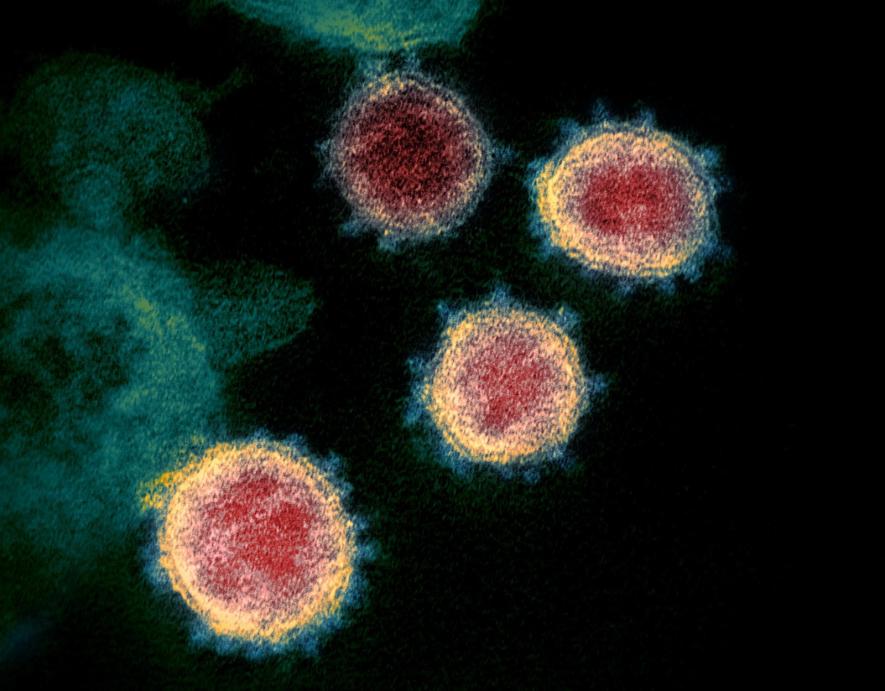New Scientific Tool 83% ‘Accurate’ in Predicting Life or Death of COVID-19 Patients

COVID-19 led to unprecedented research and exploration across the world. While scientists and researchers have uncovered many crucial aspects of the pathogenicity of the disease and also about the coronavirus, there is a wide gap in the scientific understanding of the cellular processes—especially, considering the wide range of symptoms the disease have starting from asymptomatic to severe requiring ICU facilities.
In this regard, it is very important to understand the cellular dynamics. Knowledge of which kinds of cells and what types of responses can lead to severe diseases will surely help in deciphering disease progression and also meting out a treatment paradigm.
A Yale University study published in Nature Biotechnology on February 28 has added new aspects to analysing the cellular mechanism in serious COVID-19 cases. The study has developed a computational tool with which huge amounts of cellular data can be analysed with more precision. The researchers have revealed that there are specific immune cells that are linked to increased risk from COVID-19.
Some of the immunological terms are now common today thanks to the swathes of writing about research which could introduce several terms and phenomena to the people in general. It is well known that T cells and B cells are the immune system-specific cells that offer protection from the attack of invading pathogens (agents like viruses, bacteria, etc. that can cause disease). Well, B cells are those which produce the antibodies, the immune protein involved in killing pathogens, and T cells accomplish a more complicated task of immune signalling.
Large-scale data analyses involving millions of cells could provide scientists a broad overview of the response of the immune system against SARS-CoV-2, the coronavirus driving the pandemic. Analyses of such a degree have led researchers and bio-scientists to find certain immune cell responses that can trigger severe disease conditions. Interestingly, some of the cells involved in it are usually involved in mounting a protective response.
The latest tool developed by scientists of Yale University has been claimed to enable researchers to get precise information of all resolutions of data from millions of cells to a single cell—
that too within minutes. The tool, named ‘Multiscale PHATE, is based on the algorithm called PHATE and was developed at the lab of Smita Krishnaswamy, an associate professor of genetics and computer science. The tool, developed using a computational technique called Machine Learning, is expected to overcome the difficulties associated with some previously used data analysing tools.
Explaining the newly developed tool’s specialty, Manik Kuchroo, the co-lead author of the study and a doctoral candidate at the Yale School of Medicine, was quoted: “Machine learning algorithms typically focus on a single resolution view of the data ignoring information that can be found in other more focussed views. For this reason, we created Multiscale PHATE, which allows users to zoom in and focus on specific subsets of their data to perform more detailed analysis.”
The team of researchers used the PHATE tool to analyse 55 million blood cells collected from 163 severe COVID-19 patients admitted to Yale New Haven Hospital. Krishnasawmy’s team found that a high level of T cells in the patients was protective against poor disease condition while high levels of other two immune cell types, namely granulocytes and monocytes, were linked to an increased level of mortality.
However, when the team went to a more granular level, they found that some specific kind of T cells can be dangerous in terms of causing severe disease. They found that TH17, a type of the T cell (Helper T cell), was associated with increased mortality. By measuring the quantities of these cells in the blood, the researchers claimed that they could predict with an accuracy of 83% whether a patient will live or die.
The study’s corresponding author said: “We were able to rank order risk factors of mortality to show which are the most dangerous” adding that the new tool can also be used to study risk assessment in other diseases.
Get the latest reports & analysis with people's perspective on Protests, movements & deep analytical videos, discussions of the current affairs in your Telegram app. Subscribe to NewsClick's Telegram channel & get Real-Time updates on stories, as they get published on our website.
























